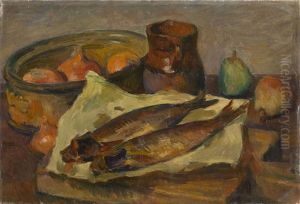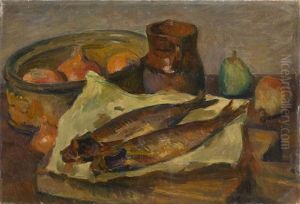Osip Emmanuilovich Braz Paintings
Osip Emmanuilovich Braz was a Russian-Jewish portrait painter and art collector born on January 16, 1873, in Odessa, Russian Empire (now Ukraine). His artistic journey began at the Odessa Drawing School, and he further honed his skills at the Imperial Academy of Arts in Saint Petersburg. Braz was deeply influenced by the works of old masters and developed a style that combined traditional techniques with the emerging trends of his time.
In the 1890s, Braz traveled to Munich and Paris, where he absorbed the influences of Western European art, which can be seen in his subtle use of color and light. He returned to Saint Petersburg and became a member of the Peredvizhniki (Wanderers), a group of realist artists who sought to engage with the social and cultural issues of the day through their work. Braz's portraits are particularly notable for their psychological depth and the skillful rendering of his subjects' personalities.
During his career, Braz also worked as a museum curator and played a significant role in the Russian art scene. He was appointed as the head of the Tretyakov Gallery in Moscow, where he was responsible for acquiring important works by contemporary Russian artists. His tenure was marked by efforts to preserve and promote Russian cultural heritage.
The advent of the Russian Revolution in 1917 brought significant changes to Braz's life and career. The new Soviet regime viewed artists of the previous era with suspicion, and Braz's position within the art establishment became precarious. He was arrested in 1924 but eventually released. Following this troubling period, he emigrated to Berlin, where he continued his work as a painter and art restorer.
Osip Emmanuilovich Braz died on November 10, 1936, in Paris, France, where he spent the last years of his life. Despite the political turmoil that overshadowed his later years, Braz's contributions to Russian art were substantial, and his portraits remain a testament to his mastery of form and character.






























